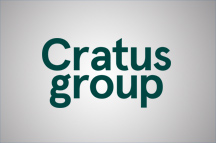Each week, Cratus’ Devolution Diaries brings you a deep dive into part of the devolution and local government reorganisation puzzle. Today, we’re taking you to the sunny South Coast, where a devolution deal is emerging around the Solent, stretching from this urban core of Hampshire right up to the London commuter towns of Fleet and Basingstoke. Hampshire and the Solent is preparing for a major change as one of the big players on the Devolution Priority Programme.
The Solent is the largest of England’s metropolitan areas without an elected Mayor, with the Portsmouth-Southampton conurbation formed of between 1.3 and 1.5 million people and some nationally significant infrastructure, including Southampton Airport, a major rail interchange and one of our largest container ports.
Successive attempts at securing a devolution deal for the area have ultimately failed. The stumbling block in the past has been the economic and geographic divide of the county between the rural, London-facing north and the suburban Solent coast, and the knock-on implications for the geography of devolved government.
This time, devolution efforts for Hampshire are moving at pace with the geography for devolution in place – as the existing County plus the Isle of Wight and two Solent cities. A Mayor will be elected for this region in May 2026.
The Mayor of Hampshire and the Solent would take on a range of new powers coming from Whitehall. Most notably, the Mayor is expected to pick up the power to call in planning applications and produce a Spatial Development Strategy to steer the long-term development of the region.
Alongside these powers in planning, we expect the Mayor to have the power to directly intervene in local transport arrangements, with other mayors elsewhere having brought in bus franchising models, for example. A focus for the new Mayor will be on improving transport connections around the urban areas of the Solent, where trains between Portsmouth and Southampton run at an average speed below 40 miles per hour – and take an hour despite being neighbours.
Likely candidates are already emerging, with former Portsmouth City Council leader and current Police and Crime Commissioner Donna Jones seeking the Conservative nomination. She has the backing of local Conservative heavyweights, including former Portsmouth North MP Penny Mordaunt and North East Hampshire MP Kit Malthouse.
Hampshire authorities sought an extension to November for their September deadline for local government reorganisation, but Cratus does not expect this to be granted by MHCLG. Hampshire and the Solent is expected to submit its full reorganisation plans in September, which will give the first look at the new planning authorities coming for the region.
One of the key debates for Hampshire will be whether existing districts can be – or should be – split between the new unitary authorities. This is especially true for Test Valley and East Hampshire, which together embody the county’s north/south divide on a smaller scale. Each district has a northern centre which aligns more with Basingstoke or the London commuter routes, a southern centre which looks either towards Portsmouth or Southampton, and effective suburbs of either city.
Less wholesale change to council boundaries is less controversial, with the principle of small boundary changes to accommodate recent development generally accepted.
This and other issues around Local Government Reorganisation are consuming huge amounts of time in councils at all levels in Hampshire, with Council Leaders and Chief Executives focused on the rapidly approaching deadline for full proposals in just four months’ time.
If you’re interested in Hampshire and the Solent or you want to know what devolution in the region means for your project, get in touch or ask about the Hampshire Development Forum.












